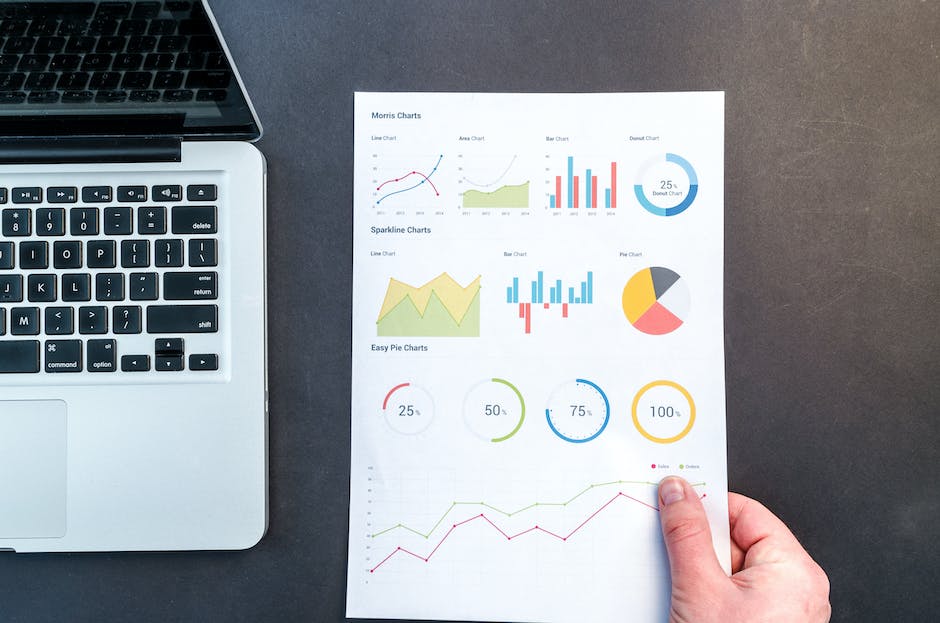Table of Contents
Unlock the power of data to optimize your workforce.
Introduction
Understanding HR Analytics: A Beginner’s Guide
HR analytics is a powerful tool that can help organizations make data-driven decisions about their workforce. In this beginner’s guide, we will explore the basics of HR analytics, including what it is, why it is important, and how it can be used to improve HR practices and drive business success. Whether you are new to HR analytics or looking to deepen your understanding, this guide will provide you with the knowledge and skills you need to harness the power of data in your HR strategy.
Importance of HR Analytics in Modern Business

In today’s fast-paced and competitive business environment, companies are constantly looking for ways to gain a competitive edge. One area that has gained increasing importance in recent years is HR analytics. HR analytics involves the use of data and statistical analysis to make informed decisions about human resources management. By leveraging data, companies can better understand their workforce, identify trends, and make strategic decisions that drive business success.
One of the key reasons why HR analytics is so important in modern business is its ability to provide valuable insights into the workforce. By analyzing data on employee performance, engagement, and turnover, companies can gain a better understanding of what drives employee satisfaction and productivity. This information can then be used to make informed decisions about recruitment, training, and retention strategies.
Another important aspect of HR analytics is its ability to help companies identify and address potential issues before they become major problems. By analyzing data on employee performance and engagement, companies can identify trends that may indicate issues such as low morale, high turnover, or poor performance. Armed with this information, companies can take proactive steps to address these issues before they escalate and impact the bottom line.
HR analytics can also help companies make more strategic decisions about their workforce. By analyzing data on employee skills, experience, and performance, companies can identify areas where they may need to invest in training or development. This can help companies ensure that they have the right talent in place to drive business success.
In addition to providing valuable insights into the workforce, HR analytics can also help companies measure the impact of their HR initiatives. By tracking key metrics such as employee engagement, turnover, and performance, companies can assess the effectiveness of their HR programs and make adjustments as needed. This can help companies ensure that they are getting the most out of their human resources investments.
Overall, HR analytics is a powerful tool that can help companies make more informed decisions about their workforce. By leveraging data and statistical analysis, companies can gain valuable insights into their workforce, identify potential issues, and make strategic decisions that drive business success. In today’s competitive business environment, HR analytics is no longer a nice-to-have – it is a must-have for companies looking to stay ahead of the curve.
Key Metrics to Track in HR Analytics
Human resources (HR) analytics is a powerful tool that can help organizations make data-driven decisions to improve their workforce management strategies. By analyzing key metrics, HR professionals can gain valuable insights into employee performance, engagement, and retention. In this beginner’s guide, we will explore some of the key metrics that HR teams should track to drive business success.
One of the most important metrics to track in HR analytics is employee turnover rate. This metric measures the percentage of employees who leave the organization within a given period. A high turnover rate can be a red flag, indicating potential issues with employee satisfaction, engagement, or organizational culture. By tracking turnover rate, HR teams can identify trends and patterns that may be contributing to employee attrition and take proactive steps to address them.
Another critical metric to monitor is employee engagement. Engaged employees are more productive, motivated, and committed to their work. By measuring employee engagement through surveys, feedback, and performance reviews, HR teams can identify areas where employees may be disengaged and implement strategies to boost engagement levels. Improving employee engagement can lead to higher retention rates, increased productivity, and a more positive work environment.
Performance metrics are also essential in HR analytics. Tracking key performance indicators (KPIs) such as sales targets, customer satisfaction scores, and project deadlines can help HR teams assess employee performance and identify areas for improvement. By analyzing performance data, HR professionals can provide targeted training, coaching, and development opportunities to help employees reach their full potential and contribute to the organization’s success.
In addition to tracking employee turnover, engagement, and performance, HR teams should also monitor metrics related to diversity and inclusion. Diversity metrics such as gender, ethnicity, and age can help organizations assess the representation of different groups within the workforce and identify opportunities to promote diversity and inclusion. By tracking diversity metrics, HR teams can create more inclusive hiring practices, training programs, and leadership development initiatives that support a diverse and equitable workplace.
Workforce planning metrics are another important aspect of HR analytics. By analyzing data on workforce demographics, skills, and competencies, HR teams can forecast future workforce needs and develop strategies to attract, retain, and develop top talent. Workforce planning metrics can help organizations align their workforce with business goals, anticipate skill gaps, and make informed decisions about recruitment, training, and succession planning.
In conclusion, HR analytics is a valuable tool for organizations looking to optimize their workforce management strategies and drive business success. By tracking key metrics such as employee turnover, engagement, performance, diversity, and workforce planning, HR teams can gain valuable insights into their workforce and make data-driven decisions to improve employee satisfaction, productivity, and retention. By leveraging HR analytics, organizations can create a more engaged, diverse, and high-performing workforce that drives business growth and success.
How to Implement HR Analytics in Your Organization
HR analytics is a powerful tool that can help organizations make informed decisions about their workforce. By analyzing data related to employees, such as performance, engagement, and turnover, HR professionals can gain valuable insights that can drive strategic initiatives and improve overall business performance. However, implementing HR analytics in an organization can be a daunting task for beginners. In this article, we will provide a beginner’s guide to understanding and implementing HR analytics.
The first step in implementing HR analytics is to define your objectives. What are the key questions you want to answer with HR analytics? Are you looking to improve employee retention, increase productivity, or enhance recruitment efforts? By clearly defining your objectives, you can focus your efforts on collecting and analyzing the right data to achieve your goals.
Once you have defined your objectives, the next step is to identify the data sources that will provide the information you need. This may include HRIS systems, performance management tools, employee surveys, and other sources of employee data. It is important to ensure that the data you collect is accurate, reliable, and up-to-date to ensure the validity of your analysis.
After collecting the necessary data, the next step is to analyze it to uncover insights that can inform decision-making. This may involve using statistical techniques, such as regression analysis or correlation analysis, to identify patterns and relationships in the data. By analyzing the data, you can gain a deeper understanding of your workforce and identify areas for improvement.
One of the key benefits of HR analytics is its ability to predict future outcomes based on historical data. By using predictive analytics, organizations can forecast trends in employee behavior, such as turnover or performance, and take proactive measures to address potential issues before they arise. This can help organizations make more informed decisions and improve overall business performance.
In addition to predictive analytics, organizations can also use prescriptive analytics to recommend actions that can optimize workforce performance. By using prescriptive analytics, organizations can identify the most effective strategies for improving employee engagement, productivity, and retention. This can help organizations make data-driven decisions that drive positive outcomes for both employees and the business.
Implementing HR analytics in an organization requires a combination of technology, skills, and processes. Organizations may need to invest in analytics tools and software to collect, analyze, and visualize data. In addition, HR professionals may need to develop their analytical skills to effectively interpret and communicate insights from the data. Finally, organizations may need to establish processes for collecting, analyzing, and acting on HR analytics to ensure that it is integrated into decision-making processes.
In conclusion, HR analytics is a valuable tool that can help organizations make data-driven decisions about their workforce. By defining objectives, collecting and analyzing data, and using predictive and prescriptive analytics, organizations can gain valuable insights that can drive strategic initiatives and improve overall business performance. By understanding and implementing HR analytics, organizations can unlock the full potential of their workforce and achieve their business goals.
Common Challenges in Utilizing HR Analytics
In today’s data-driven world, human resources (HR) departments are increasingly turning to analytics to make informed decisions about their workforce. HR analytics involves the use of data and statistical analysis to improve HR processes and ultimately drive business outcomes. While the potential benefits of HR analytics are vast, many organizations face common challenges when trying to implement and utilize these tools effectively.
One of the most common challenges in utilizing HR analytics is the lack of quality data. HR departments often struggle to collect and maintain accurate and up-to-date data on their employees. Without reliable data, it is impossible to generate meaningful insights from analytics. To address this challenge, organizations must invest in systems and processes that ensure data integrity and accuracy. This may involve implementing data validation checks, conducting regular audits, and training staff on data entry best practices.
Another challenge in utilizing HR analytics is the lack of analytical skills within the HR department. Many HR professionals do not have the necessary training or experience to analyze data effectively. To overcome this challenge, organizations can provide training and development opportunities for HR staff to build their analytical capabilities. This may involve enrolling employees in data analysis courses, hiring data analysts to support the HR team, or partnering with external consultants who specialize in HR analytics.
Additionally, organizations often struggle to align HR analytics with business objectives. HR departments may collect and analyze data without a clear understanding of how it will impact the organization’s overall goals and strategy. To address this challenge, HR professionals must work closely with senior leadership to identify key business metrics and develop analytics initiatives that support these objectives. By aligning HR analytics with business goals, organizations can ensure that their efforts drive meaningful results and contribute to the bottom line.
Another common challenge in utilizing HR analytics is the lack of stakeholder buy-in. HR professionals may face resistance from senior leadership, line managers, or employees who are skeptical of the value of analytics. To overcome this challenge, HR departments must communicate the benefits of HR analytics effectively and demonstrate how data-driven insights can improve decision-making and drive business outcomes. This may involve presenting case studies, sharing success stories, and involving stakeholders in the analytics process to build trust and credibility.
Finally, organizations often struggle to measure the impact of HR analytics initiatives. Without clear metrics and KPIs in place, it is difficult to assess the effectiveness of analytics efforts and make data-driven decisions. To address this challenge, organizations must define key performance indicators (KPIs) that align with their business objectives and track these metrics over time. By measuring the impact of HR analytics initiatives, organizations can identify areas for improvement, optimize their processes, and demonstrate the value of analytics to stakeholders.
In conclusion, while HR analytics offers tremendous potential for organizations to improve their HR processes and drive business outcomes, there are common challenges that must be addressed to realize these benefits. By investing in data quality, building analytical capabilities, aligning analytics with business objectives, gaining stakeholder buy-in, and measuring the impact of analytics initiatives, organizations can overcome these challenges and harness the power of HR analytics to make informed decisions about their workforce.
Q&A
1. What is HR analytics?
HR analytics is the process of collecting and analyzing data related to human resources to improve decision-making and strategic planning within an organization.
2. Why is HR analytics important?
HR analytics can help organizations make more informed decisions about their workforce, improve employee performance, and increase overall productivity.
3. What are some common HR metrics used in analytics?
Common HR metrics used in analytics include employee turnover rate, time to fill a position, employee engagement scores, and training and development ROI.
4. How can organizations get started with HR analytics?
Organizations can start with HR analytics by identifying key metrics to track, investing in data collection tools, and training HR staff on how to analyze and interpret data effectively.
Conclusion
Understanding HR Analytics is essential for businesses looking to make data-driven decisions about their workforce. This beginner’s guide provides a comprehensive overview of the key concepts and tools needed to effectively analyze HR data and improve organizational performance. By leveraging HR analytics, companies can gain valuable insights into employee engagement, retention, and productivity, ultimately leading to better decision-making and strategic planning. Overall, this guide serves as a valuable resource for HR professionals looking to enhance their analytical skills and drive positive change within their organizations.




